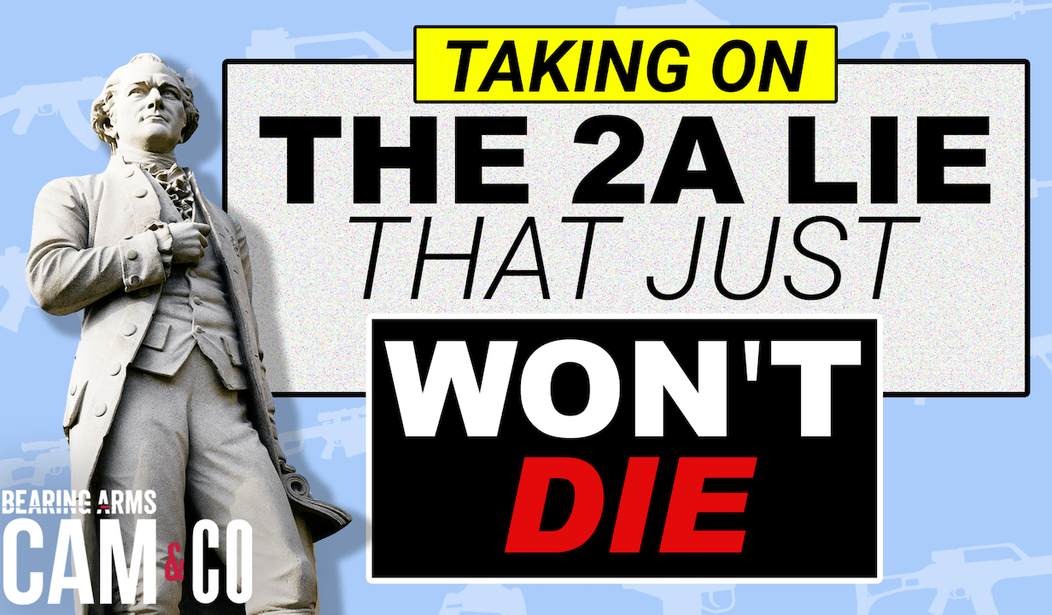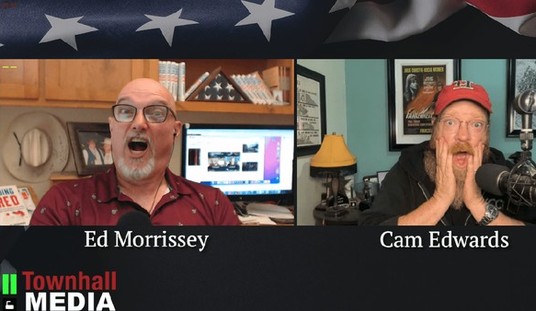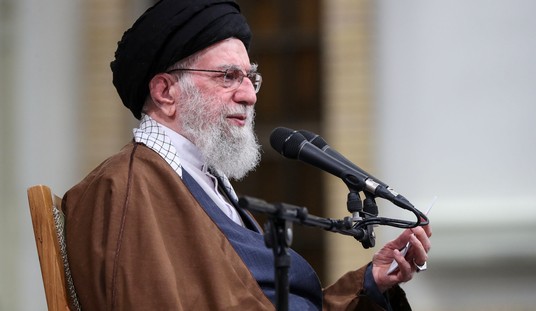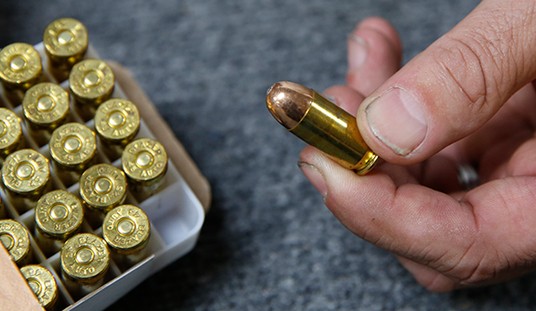It’s one of the most pernicious myths about the Second Amendment: the idea that the right to keep and bear arms wasn’t meant as a tool to protect individual liberty but to keep slaves in bondage. According to the argument, most recently made by historian Carol Anderson in her book “The Second”, the right to keep and bear arms never would have been enshrined in the Bill of Rights were it not for insistent southerners who demanded the constitutional protection of state militias in order to protect against slave revolts and to serve as a police power on the population of those people held as property.
As we learn on today’s Bearing Arms’ Cam & Co, the attempt to portray the Second Amendment as a relic of slavery actually began more than 20 years ago, when Professor Carl Bogus released his law review article entitled “The Hidden History of the Second Amendment.” Bogus declared (without any direct evidence, mind you) that there was a secret plan hatched by James Madison and other slave owners to ensure that the state’s power to establish militias wouldn’t be curtailed by the new federal Constitution; not because of any real concerns over a tyrannical government, but because they were terrified about the prospect of an armed rebellion by slaves themselves.
Second Amendment attorney and scholar Stephen Halbrook has a new article of his own out now detailing both the flaws in the Bogus theory and the true timeline of events that led to the introduction and eventual ratification of the Second Amendment, and he joined me on today’s show to lay out his own evidence that slavery was not the driving force behind the desire to protect the pre-existing right to keep and bear arms.
As Halbrook notes, slave codes in the South were indeed a real feature of colonial times, and they often included a ban on slaves possessing firearms. But other rights were abridged as well. These were slaves, after all, and in the eyes of the law humans held as property possessed few if any natural rights.
Slaves were deprived of all of the rights that would be set forth in the Bill of Rights. The Second Amendment was not unique in that regard. St. George Tucker summarized their plight thus:
To go abroad without a written permission; to keep or carry a gun, or other weapon; to utter any seditious speech; to be present at any unlawful assembly of slaves; to lift the hand in opposition to a white person, unless wantonly assaulted, are all offences punishable by whipping.
Such provisions were included, for instance, in Virginia’s slave code of 1748. Some of these activities would find explicit protection in the First and Second Amendments when exercised by “the people.” The First Amendment protected “the freedom of speech” and “the right of the people peaceably to assemble.” But the slave code strictly prohibited “the meetings of slaves” and punished “every slave, present at any unlawful meeting.” Of course, the fact that slaves were deprived of First Amendment rights does not imply that the First Amendment was adopted to protect slavery.
The same holds true for the Second Amendment. As Halbrook lays out, it was actually northern states like Pennsylvania and Vermont that first enshrined the right of the people to bear arms in defense of the state and themselves in state constitutions that pre-date the Bill of Rights by more than a decade. And once the revolution was over, the debate over protecting that right from federal intrusion was once again led by northern states that were already moving towards abolition of slavery.
In the New Hampshire ratification convention in 1788, antifederalist leader Joshua Atherton led the opposition to adoption of the federal Constitution. “The strongest and leading argument urged against it was derived from the fact that the Constitution sanctioned or tolerated human slavery. Hon. Jos. Atherton, of Amherst, had used this argument in opposition to its adoption with much force and effect.” Atherton argued that, if the Constitution is ratified, “we become Consenters to and Partakers in, the sin and guilt of this abominable traffic,” adding that “[t]he clause has not secured its [slavery’s] abolition.”
In another speech, Atherton argued that the proposed constitution was “a system calculated to forge the chains of tyranny upon the citizens of the United States.” He cited “standing armies, . . .the insecurity of the liberty of the press – . . . . bill of rights . . . .”
The New Hampshire convention was headed to a compromise in which the Constitution would be ratified, but amendments would be recommended. A committee to propose amendments was appointed, the federalists being led by convention president John Sullivan and the antifederalists being led by Joshua Atherton. The committee agreed on twelve amendments, including: “Congress shall never disarm any citizen, unless such as are or have been in actual rebellion.”
Obviously that language didn’t make it into the Bill of Rights, but the intention was certainly the same.
Now, this barely scratches the surface of the history that can be found in Halbrook’s article, and I’d encourage you to read the entire piece when you have a few minutes. I have no doubt that we’ll continue to hear the lie that the Second Amendment only exists because of the desire to protect slavery, but the history and facts are on our side.










Join the conversation as a VIP Member